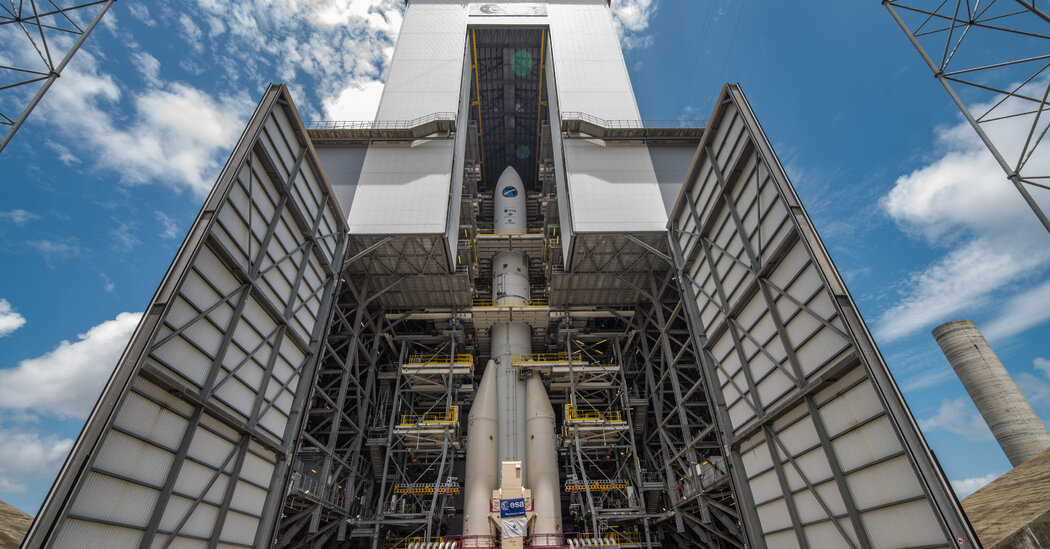Ariane 6 is finally set to fly on Tuesday. If successful, European nations will regain independent access to space.
The European Space Agency has waited about a decade for the first launch of Ariane 6, a powerful new rocket. But the brand-new vehicle is at last ready to fly — and if all goes well, European nations will once again have independent access to the final frontier, a crucial step for the space exploration and economic goals of the continent’s countries and companies.
Here’s what to know about the inaugural flight of the Ariane 6 heavy-lift launcher.
When will Ariane 6 launch, and how can I watch it?
Ariane 6 is scheduled to launch on Tuesday, July 9, from Europe’s Spaceport in Kourou, French Guiana, between 2 p.m. to 6 p.m. Eastern time.
ESA is streaming a live broadcast of the flight on YouTube, beginning at 1:30 p.m. Eastern time.
Why does Europe need its own rockets?
Europe has been without independent access to space since 2023, when Ariane 5, the vehicle that preceded Ariane 6, flew for the last time. Another smaller ESA rocket, Vega-C, has been grounded since 2022 because of a flight failure.
In the past, many of Europe’s missions flew on Russian Soyuz rockets. But Russia’s invasion of Ukraine led to a break in the relationship in 2022, ending Europe’s use of Russian launchers.
At the same time, Europe’s need to get to space — including for climate monitoring, navigation satellites and exploration of the moon, Mars and beyond — has only grown. For the past year, key missions by ESA have flown on SpaceX rockets, including the agency’s Earth Cloud Aerosol and Radiation Explorer, two Galileo navigation system satellites and the Euclid space telescope. Hera, an ESA spacecraft that will visit a pair of asteroids, is scheduled to be launched by SpaceX in the fall.
Rather than relying on international partners, a rocket built at home could guarantee that European missions, both institutional and commercial, will be prioritized on their own terms.
